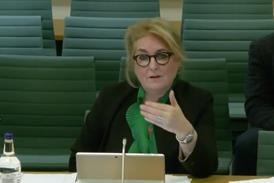An economic thinktank has suggested firms could be made to pay in to the compensation fund based on where they are located and how many partners they have.
Research from consultancy Economic Insight found sole practitioners and firms in London generate a ‘disproportionate’ level of claims on the compensation fund.
The Solicitors Regulation Authority commissioned the consultancy to investigate factors affecting claims figures since 2010. A consultation on the future of the compensation fund opens next week.
Initial analysis suggested that characteristics such as ownership and location are correlated with the probability of claims made against a firm.
The report suggests the SRA may seek to come up with a new model for how the compensation fund is financed. The regulator is in the middle of a two-year review of the fund.
The Economic Insight summary said: ‘Our (tentative) conclusion is that pricing the compensation fund in a ”risk-based” way would involve a change from the status quo, with payments made by firms being set with regard to their characteristics.’
This would be a departure from current SRA policy, which simply states that all firms that hold client money pay a flat fee contribution of £836. There is no indication at this stage that the SRA will take on board the recommendations of the Economic Insight report.
The data referred to 8,353 claims made against 801 firms from 1 February 2010 to 30 September 2012. The total paid out over this period was £44m.
Over the period researched, 45% of firms who had a claim made against them were sole practitioners, while sole practitioners made up by 33% of firms.
But companies limited by shares and LLPs have significantly higher average paid values than other types of firm. However, this result is largely driven by the two firms that attracted the largest draws on the fund; Wolstenholmes and Bevan Bray Walker.
In terms of region, firms in the London postcode made up 35% of claims compared to 29% of firms overall. The south-east (12%) and north-west (13%) made up the next highest proportion of compensation fund claims.
Firms with annual turnover of between £100,000 and £500,000 are more likely than the smallest or largest firms to have paid claims made against them. Set against this, is some evidence to suggest that firms with lower and higher turnover levels have the highest paid claims.

























11 Readers' comments